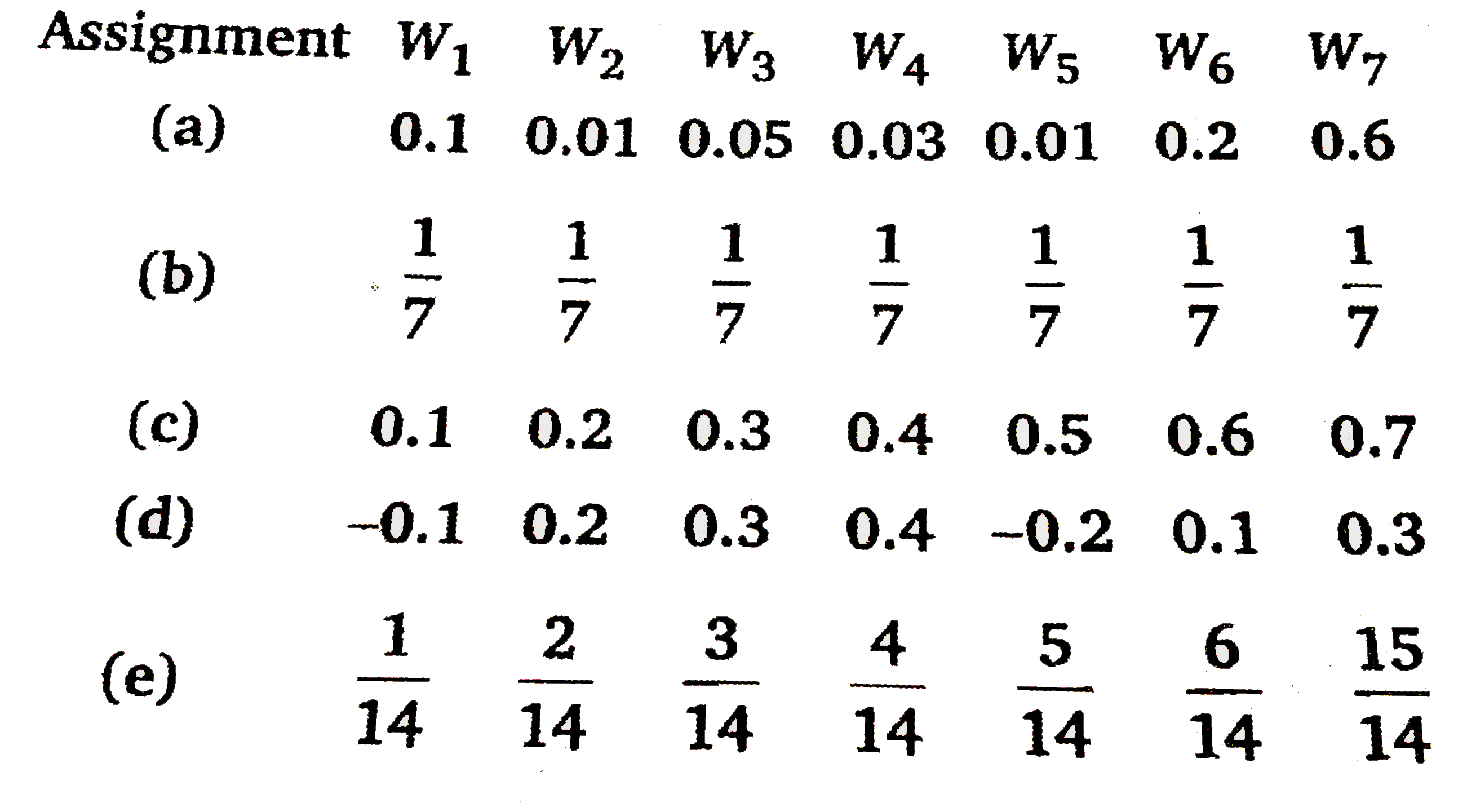If a digit
is chosen at random from the digits
, then the probability that the digit is even, is
(a)
(b)
(c)
(d) Solution in Bengali
The correct Answer is:1
Given set of number is {1, 2, ……, 9} in which 4 are even and 5 are odd, so in the given product it is not possible to arrange to substract only even number from odd number, there must be at least one factor involving substraction of an odd number from another odd number. So at least one of the factor is even. Hence, product is always even.
Required probability = 1
Topper's Solved these Questions
- BOOK - CENGAGE PUBLICATIONCHAPTER - PROBABILITY I EXERCISE - Exercise 9.37videos
PROBABILITY I
- BOOK - CENGAGE PUBLICATIONCHAPTER - PROBABILITY I EXERCISE - MCQ54videos
PROBABILITY I
- BOOK - CENGAGE PUBLICATIONCHAPTER - PROBABILITY I EXERCISE - Exercise 9.16videos
PROBABILITY I
- BOOK - CENGAGE PUBLICATIONCHAPTER - PROBABILITYEXERCISE - All Questions470videos
PROBABILITY
- BOOK - CENGAGE PUBLICATIONCHAPTER - PROBABILITY IIEXERCISE - MULTIPLE CORRECT ANSWER TYPE6videos
PROBABILITY II
Similar Questions
AandB are two candidates seeking admission in IIT. The probability that A is selected is 0.5 and the probability that AandB are selected is at most 0.3. Is it possible that the probability of B getting selected is 0.9?
02:12View SolutionA sample space consists of 3 sample points with associated probabilities given as 2p,p2,4p−1. Then the value of p is p= a.√11−3 b. √10−3 c. 14<p<12 d.none
02:01View SolutionWhich of the following cannot be valid assignment of probabilities for outcomes of sample space S={W1,W2,W3,W4,W5,W6,W7}
 02:36View Solution
02:36View SolutionA coin is tossed three times, consider the following events. A : ‘No head appears’, B: ‘Exactly one head appears’ and C: ‘Atleast two appear’. Do they form a set of mutually exclusive and exhaustive events?
01:35View SolutionLet EandF be two independent events. The probability that exactly one of them occurs is 1125 and the probability if none of them occurring is 225. If P(T) denotes the probability of occurrence of the event T, then (a) P(E)=45,P(F)=35 (b) P(E)=15,P(F)=25 (c) P(E)=25,P(F)=15 (d) P(E)=35,P(F)=45
02:42View SolutionIf a digit is chosen at random from the digits 1, 2, 3, 4, 5, 6, 7, 8, 9 , then the probability that it is odd, is 49 (b) 59 (c) 19 (d) 23
03:29View SolutionIn Q. No. 115, the probability that the digit is even, is 49 (b) 59 (c) 19 (d) 23
00:43View SolutionA digit is selected at random from either of the two sets {1, 2, 3, 4, 5, 6, 7, 8, 9} and {1, 2, 3, 4, 5, 6, 7, 8, 9}. What is the chance that the sum of the digits selected is 1 0?
01:22View SolutionA 2 digit number is formed using the digits 2, 3, 5, 8 and 9 without repetition. What is the probability that the digits used are 3 and 9?
01:13View SolutionTwo digits are chosen at random from the digits 1, 2, 3, …, 9, if the sum of the chosen digits is odd, find the probability that one of the chosen digit is 6.
02:00View SolutionSeven digits from the numbers 1, 2, 3, 4, 5, 6, 7, 8 and 9 are written in random order. The probability that this seven digit number is divisible by 9 is :
04:13View SolutionA digit is chosen at random from the digits 1 to 9. What is the probability that the digit is even?
01:38View SolutionIf a digit is chosen at random from the digits 1, 2, 3, 4, 5, 6, 7, 8, 9 , then the probability that it is odd, is
(a)49
(b) 59
(c) 19
(d) 2302:50View SolutionIf a digit is chosen at random from the digits 1, 2, 3, 4, 5, 6, 7, 8, 9 , then the probability that the digit is even, is
(a)49
(b) 59
(c) 19
(d) 2301:35View SolutionIf a digit is chosen at random from the digits 1, 2, 3, 4, 5, 6, 7, 8, 9 then, the probability that the digit is a multiple of 3 is
(a)13
(b) 23
(c) 19
(d) 2901:47View SolutionSeven digits from the numbers 1, 2, 3, 4, 5, 6, 7, 8, 9 are written in random order. Find the probability that the seven digited number is divisible by 9.
View Solution

